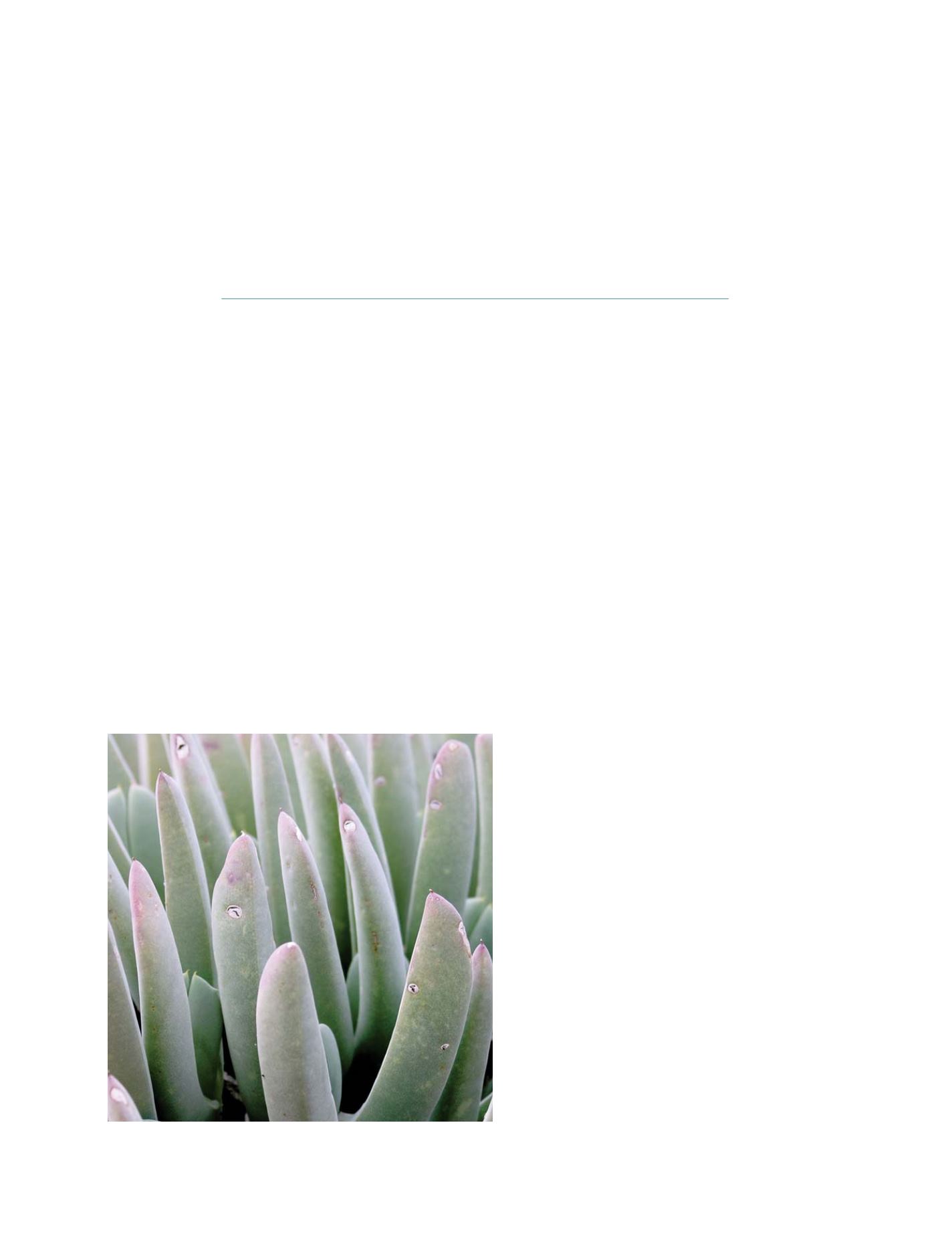

[
] 271
Reliable Earth observation
systems for science and sustainable
development in Southern Africa
J. C. Pauw, South African Environmental Observation Network
T
he Southern African environment is characterised by high
levels of variability and biodiversity. Rainfall is a primary
driver of the terrestrial ecosystems, but its high variabil-
ity limits its usefulness as an indicator of environmental change.
Rainfall outcomes are complicated by the timing, frequency and
intensity of rainfall events, as well as conditions of surface
temperature, humidity, soil, slope and vegetation. These
complexities, coupled with differential responses by thousands
of species, cause uncertainty about the direction and extent of
rainfall-induced change.
Southern Africa’s indigenous biodiversity, landscapes and oceans are
continuously changed by diverse and adjoining land uses such as
mining, farming, conservation, forestry, urban sprawl, communal
resource management, fishing and golf estates. Time-series data
covering the spectrum of spatial scales is essential for reliable data
on significant environmental change, some of which are slow, while
others may be sudden. Data obtained over short periods
from a single area offers only limited value.
The advance of climate change is already being
observed, but how and where it will impact on Southern
African society remains uncertain. Rural communities,
commonly desperate for resources and information, are
particularly vulnerable to climatic variability. This is
often further pronounced by unsustainable agricultural
and fishing practices, conducted not only by the
communities themselves, but also by commercial and
illicit enterprises. Earth observation science is thus
urgently required to bring more certainty about envi-
ronmental change, and to enable formulation of adaptive
and mitigating management policies and practices, for
themes ranging from food production to population
health.
A forum for Southern African Earth observation
While ecosystems and environmental issues are not
constrained by political boundaries, Earth observation
science in Southern Africa is yet deficient in its cohe-
sion, capacity and infrastructure. With this in mind five
countries (Botswana, Malawi, Mozambique, Namibia
and South Africa) formed observation networks and
joined to form the Environmental Observatories of
Southern Africa (ELTOSA). ELTOSA was launched in
2003 to create synergy among the countries and to create
sufficient critical mass in human and infrastructural
capacity for Earth observation.
ELTOSA countries collaborate to increase the effec-
tiveness of regional Earth observation and information.
Governments readily appreciate that pertinent priori-
ties, such as climate change, food security, population
health, land reform, economic development, waste and
pollution management, energy supply and environ-
mental security, rely on sound Earth observation to
underpin guidelines for sustainable development.
ELTOSA’s vision is for integrated observations of regional
environmental processes (eg desertification, land degra-
dation, climate change) and events (eg droughts, floods).
The resulting data enables the delivery of adequate infor-
mation to maintain productive ecosystems; a
fundamental requirement for sustainable development.
The Succulent Karoo area of South Africa is an example of a global biodiversity hotspot
Photo: JC Pauw
S
OCIETAL
B
ENEFIT
A
REAS
– B
IODIVERSITY
















